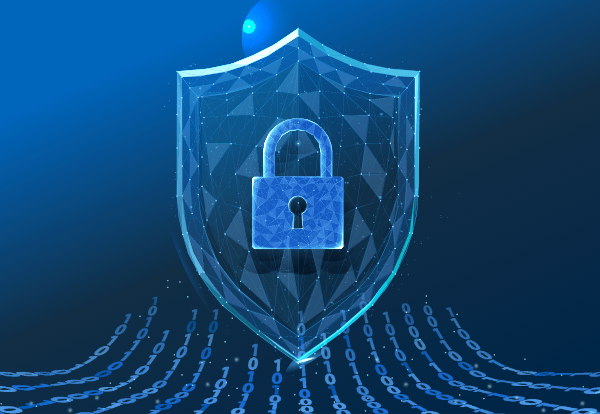What Is The Operational Technology Security Journey For Utilities Leaders?

In the high-stakes world of utilities, we’re experiencing an emerging convergence of technology and operations, which throws the importance of proper security measures into a brighter spotlight. With energy providers navigating the complexities of a digital landscape teeming with security threats, understanding the Operational Technology (OT) security journey is paramount. This blog post will guide utilities leaders through key strategies that not only protect infrastructure, but also set the foundation for modernizing energy operations and ensuring compliance with industry standards.
Understanding The OT Security Journey Phases
The OT Security Journey is the strategic approach taken by utilities to reinforce the safety of systems that support their physical operations. This involves a multi-phase process, from initial assessment to deployment and ongoing maintenance of security measures. The overarching goal is to evolve from a reactive security approach to one that is predictive and has the agility to proactively secure networks against emerging threats.
To kickstart this transformation, utilities leaders must assess their current security posture. Are their systems equipped with real-time monitoring and analytics? Are there redundancies in place to offset system failures in critical moments? If manual control is mandated and implemented in the event of an emergency, do they have the available personnel to conduct the necessary operations? By confronting these pivotal questions, leaders set the stage for the implementation of robust OT security frameworks.
In short, here is what the OT security journey involves:

The cyber news world is rife with stories related to Phase 1. Cyber-attack trends and threat behaviors are increasing daily. Understanding the adversarial strategies and tactics is the prerequisite to moving forward on the OT security solutions path. Most utilities leaders can find themselves slipping out of gear and getting stuck in idle as they move from Phase 1 to Phase 2. And an even greater challenge is posed by the sense of urgency that can throw these steps out of order. The trick is how to stay on the path, move smoothly through each phase, and ultimately find the solutions that meet the unique needs of the utility.
First Things First: Begin At The Beginning
Before you can fortify an OT environment with impeccable security, you have to understand every element that requires protection:
IDENTIFY ALL CRITICAL ASSETS FIRST!
The backbone of a utility’s operational capabilities is delineated by its identified OT critical assets. For utility leaders, this means meticulously cataloging and analyzing each component of their OT environment to distinguish which systems, devices (on-site & remote), and processes are vital to the uninterrupted delivery of services. This crucial step involves conducting comprehensive audits, leveraging network mapping tools, and employing vulnerability assessments to ensure a thorough understanding of where protective measures are most needed. This can lead to those “Oh Wow” moments mentioned in Phase 3, which are catalysts to building a complete asset list. By prioritizing these critical assets, leaders can allocate resources
more effectively, focusing on strengthening the security of systems that, if compromised, would pose the greatest risk to operational integrity and service continuity.
Create a Holistic Risk Management Plan
Comprehensive risk management must be a priority at all stages. This entails continuous risk assessments, threat modeling, and the establishment of a well-documented security policy. By adopting a life cycle approach to risk management, utilities can anticipate and mitigate threats at every stage of the OT journey.
RALLY & GALVANIZE
Get EVERYONE On Board (Especially Corporate Executives)
Before any tool or software is implemented, a foundational shift in the organizational culture is necessary. Securing buy-in from executives ensures resources are allocated, and security becomes a strategic business imperative. Leaders should champion the cause, leading by example in adhering to new security protocols. Share the OT critical assets in an open forum with senior executives and IT leaders, and the possible impacts of exploited vulnerabilities. This will build buy-in for suggested security solutions.
BUILD YOUR SOLUTIONS STACK
Investing in the right technological solutions is fundamental to protecting OT networks. This includes robust firewalls, next-generation antivirus software, network segmentation tools, and intrusion prevention and detection systems. Secure remote access solutions are also invaluable, facilitating offsite maintenance and monitoring without compromising network integrity.
However, technology alone is not enough. Continuous training on the secure use of technology within the OT environment and proactive end-user engagement are crucial factors in maintaining a strong security posture. Awareness should be a priority, with employees kept up to date on the latest security threats and best practices for handling them.
YOU'RE NOT ALONE
Leverage CISA and NIST Resources
CISA Resources
The Cybersecurity and Infrastructure Security Agency (CISA) offers utilities leaders a wealth of resources that resonate with the sector’s specific needs. Their OT Security resources provide a detailed understanding of the current threats and offer best practices for securing operational systems. CLICK HERE for details on the various resources provided by CISA.
NIST Guide
The National Institute of Standards and Technology (NIST) framework is another indispensable tool for utilities leaders crafting their OT security strategy. Utilities can use NIST’s guidelines to better structure their security plans and align with the broader energy sector’s efforts to standardize OT security practices. CLICK HERE to access the NIST Guide to Operational Technology Security

Industrial Cyber
One strong resource for continuous reference is Industrial Cyber. Revisit their site often for important information on topics such as “Zero Trust for OT.”
Utility Dive
Listing assets is a strong start. Now, visibility into those assets drives sound cybersecurity solutions actions. “Visibility: The Foundation for Securing OT in the Utility Sector”
Key Takeaways
Utilities leaders must approach the OT security journey with a multifaceted strategy that addresses technology, culture, and policy. It’s not a singular action but an ongoing process of awareness, adaptability, and preparation. By following these steps and leveraging the guidance of industry and governmental bodies, utilities can chart a secure path forward in their operational technology environments.


